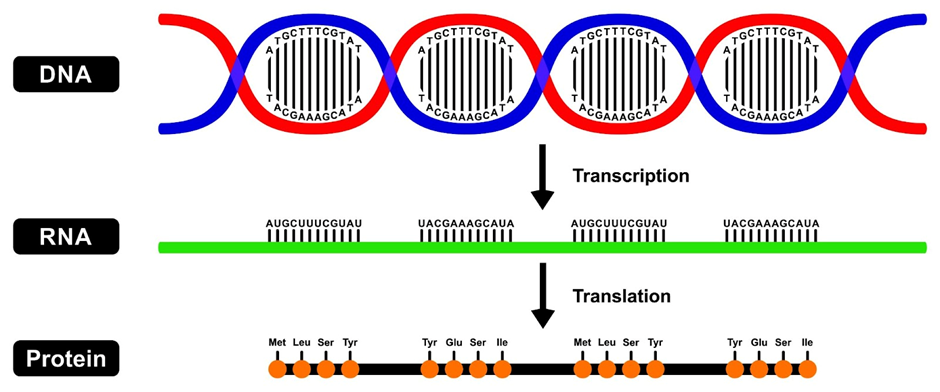Central Dogma Definition
The central dogma describes the flow of genetic information from DNA to RNA, resulting in the synthesis of functional proteins.
What is the central dogma of molecular biology ?
The fundamental feature of molecular biology presents the idea that genetic information can only move from DNA to RNA to protein or from RNA to protein directly. The central dogma of molecular biology shows how genetic information moves from DNA to RNA to proteins. It is described as a procedure that turns the data in DNA into a useful outcome.
All proteins are made up of information found in DNA, and RNA serves as a messenger by transporting information through ribosomes. The central dogma depicts the replication of DNA, the transcription of DNA into RNA, and the translation of RNA into proteins as well as the flow of genetic information inside cells.
Proteins, RNA, and DNA make up the main group of biopolymers; these three are further broken down into general transfers, unidentified transfers, and special transfers. General transfer occurs in almost all cells. The flow of information through transcription and translation is shown by central dogma.
Transcription, mRNA processing and translation are three steps involved in the central dogma in case of eukaryotes. Whereas in case of prokaryotes no mRNA processing takes place.
Also Read: What is transpiration?

Also Read: Assimilation
Central Dogma Steps
The central dogma occurs in two steps:
Transcription
Transcription transfers information from a DNA strand to RNA using the enzyme RNA polymerase. The DNA strand involved has three parts: promoter, structural gene, and terminator. The template strand synthesizes RNA, while the other is the coding strand. RNA polymerase binds to the promoter and polymerizes in the 3′ to 5′ direction. Upon reaching the terminator sequence, it releases the newly formed RNA strand, which undergoes post-transcriptional modifications.
Translation
Translation is the process by which RNA is used to synthesize specific proteins, requiring energy provided by charged tRNA molecules. Ribosomes, composed of a larger and a smaller subunit, initiate translation. The larger subunit holds two tRNA molecules close enough to form a peptide bond using energy.
During translation, mRNA enters the smaller subunit and is held by tRNA molecules with complementary codons in the larger subunit. Two codons are thus held by two tRNA molecules, forming a peptide bond. This process repeats, synthesizing long polypeptide chains of amino acids.
Read More: What is zygote?
Genetic Code
The genetic code contains information for protein synthesis from RNA. It consists of three nucleotides and four nitrogenous bases forming a triplet codon that codes for one amino acid, resulting in 64 possible codons. There are 20 naturally occurring amino acids.
The genetic code is degenerate, meaning some amino acids are coded by more than one codon. Each codon specifies a particular amino acid and the codes are universal across organisms. Out of the 64 codons, three are stop codons that halt transcription, and one initiator codon, AUG, codes for Methionine.